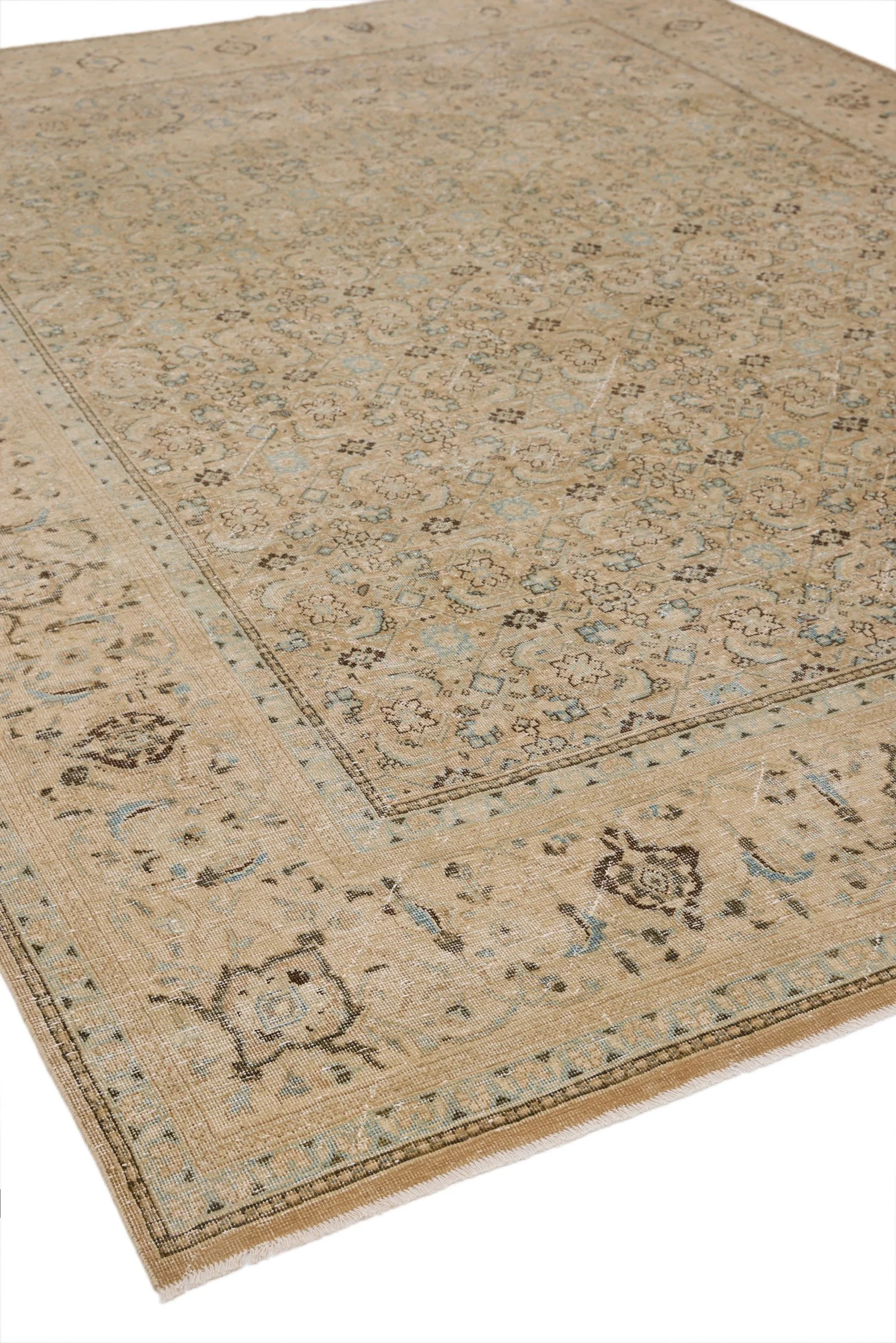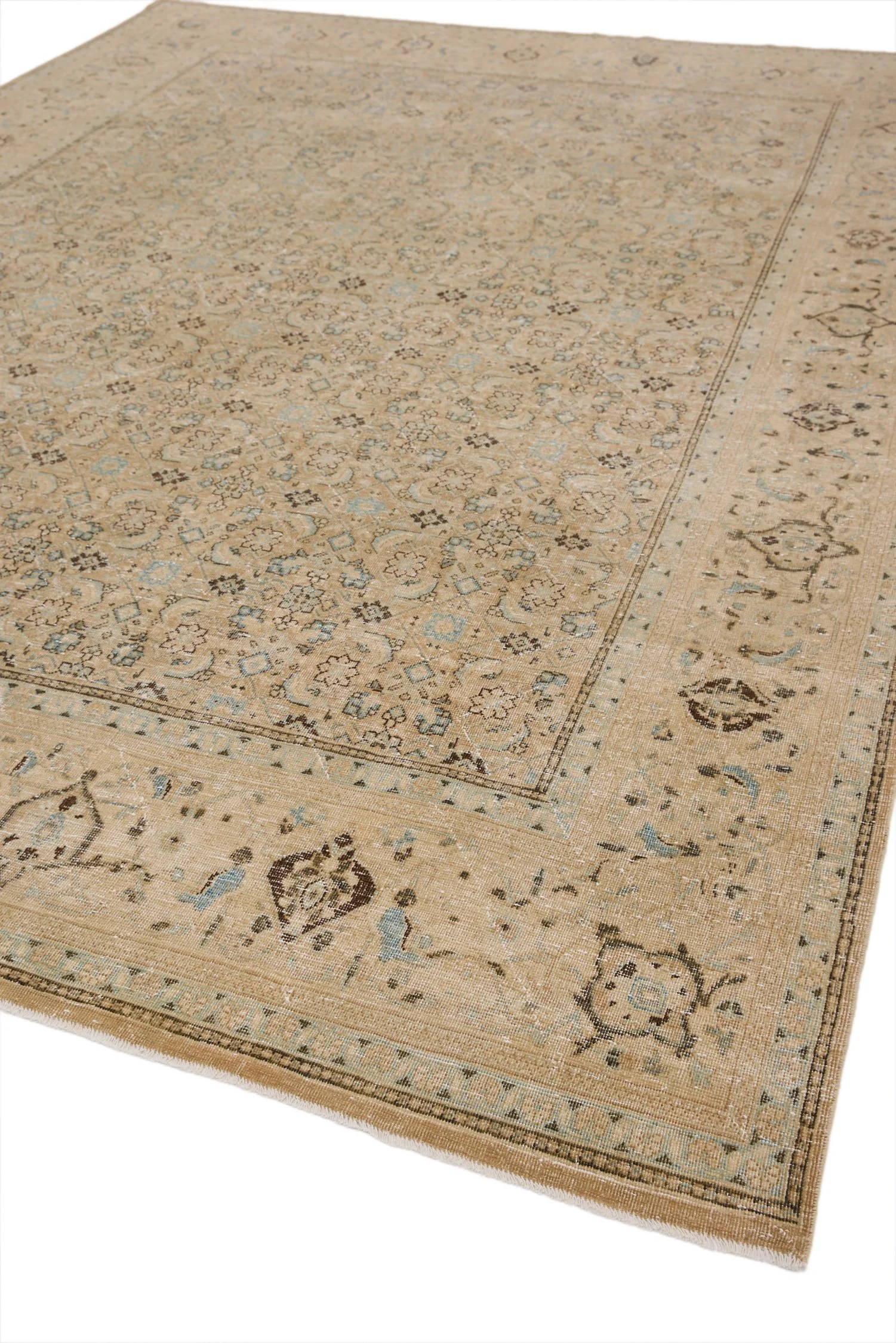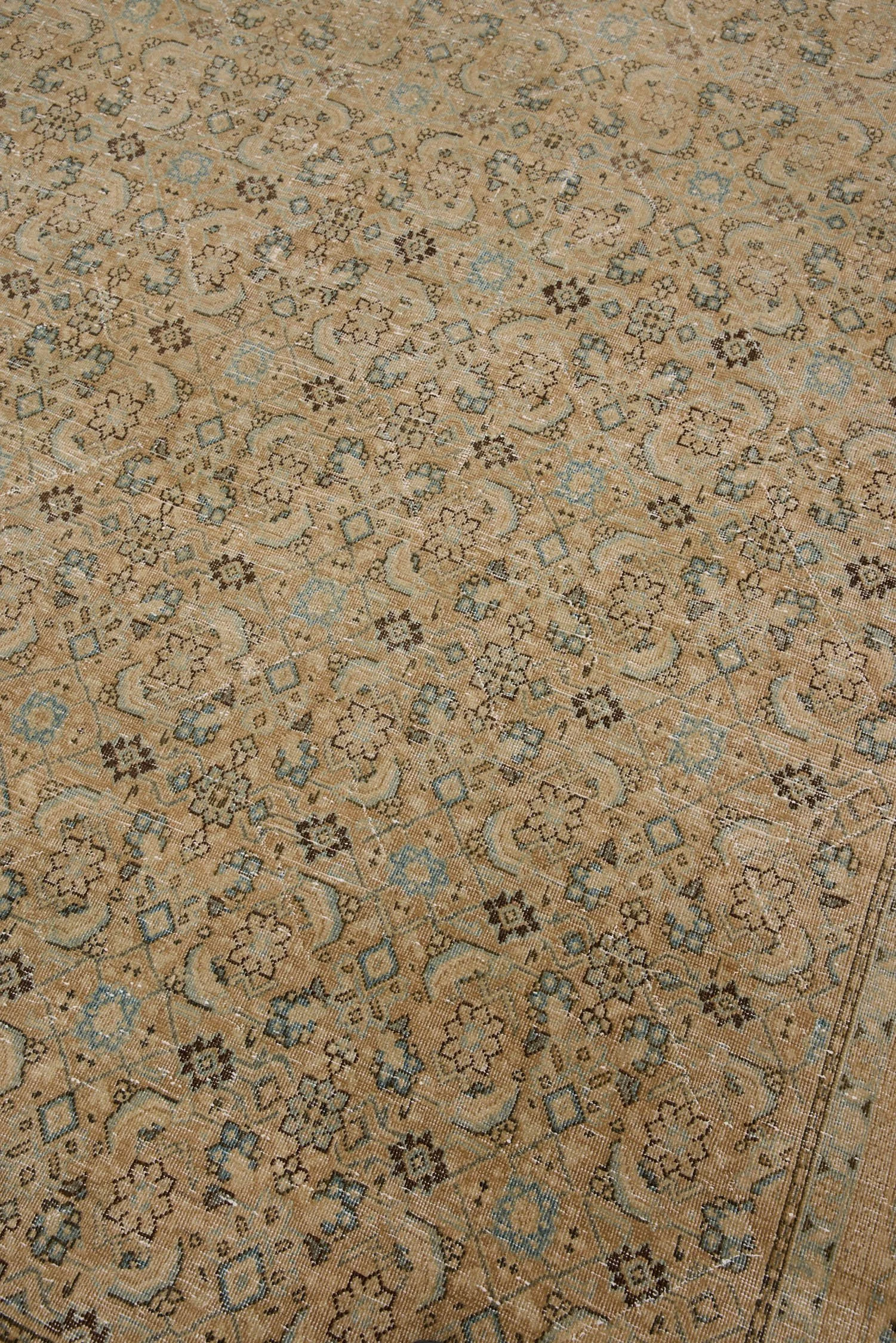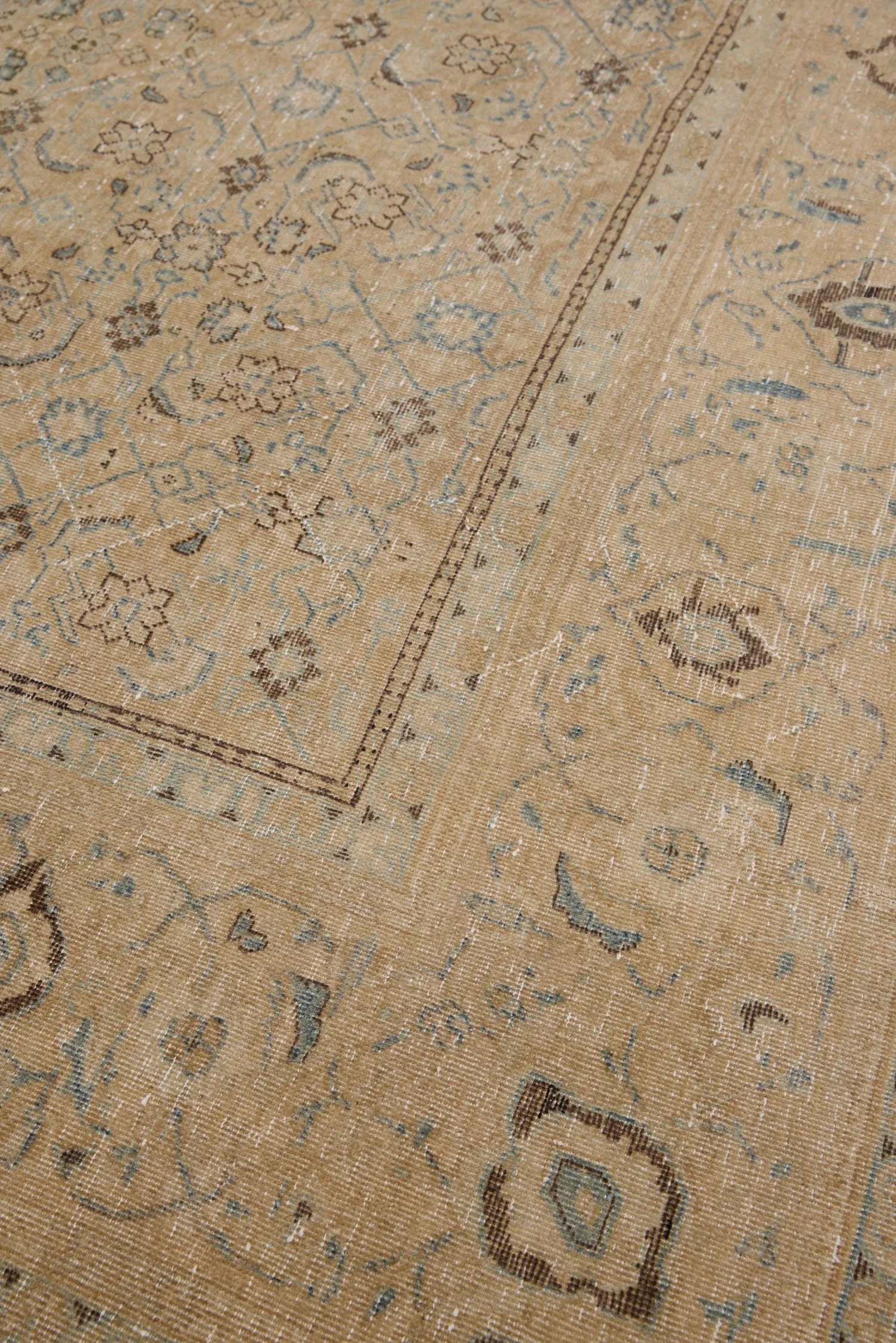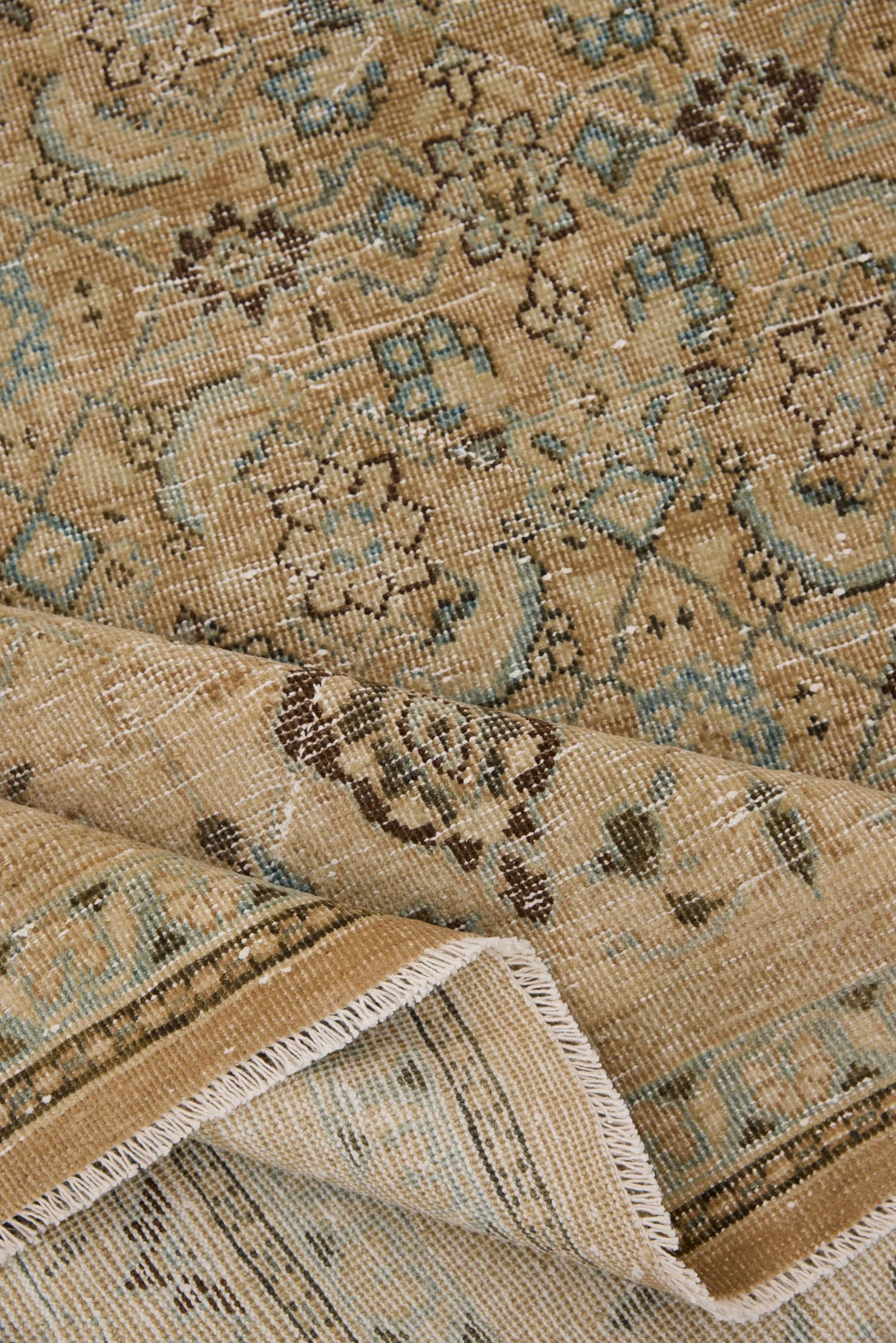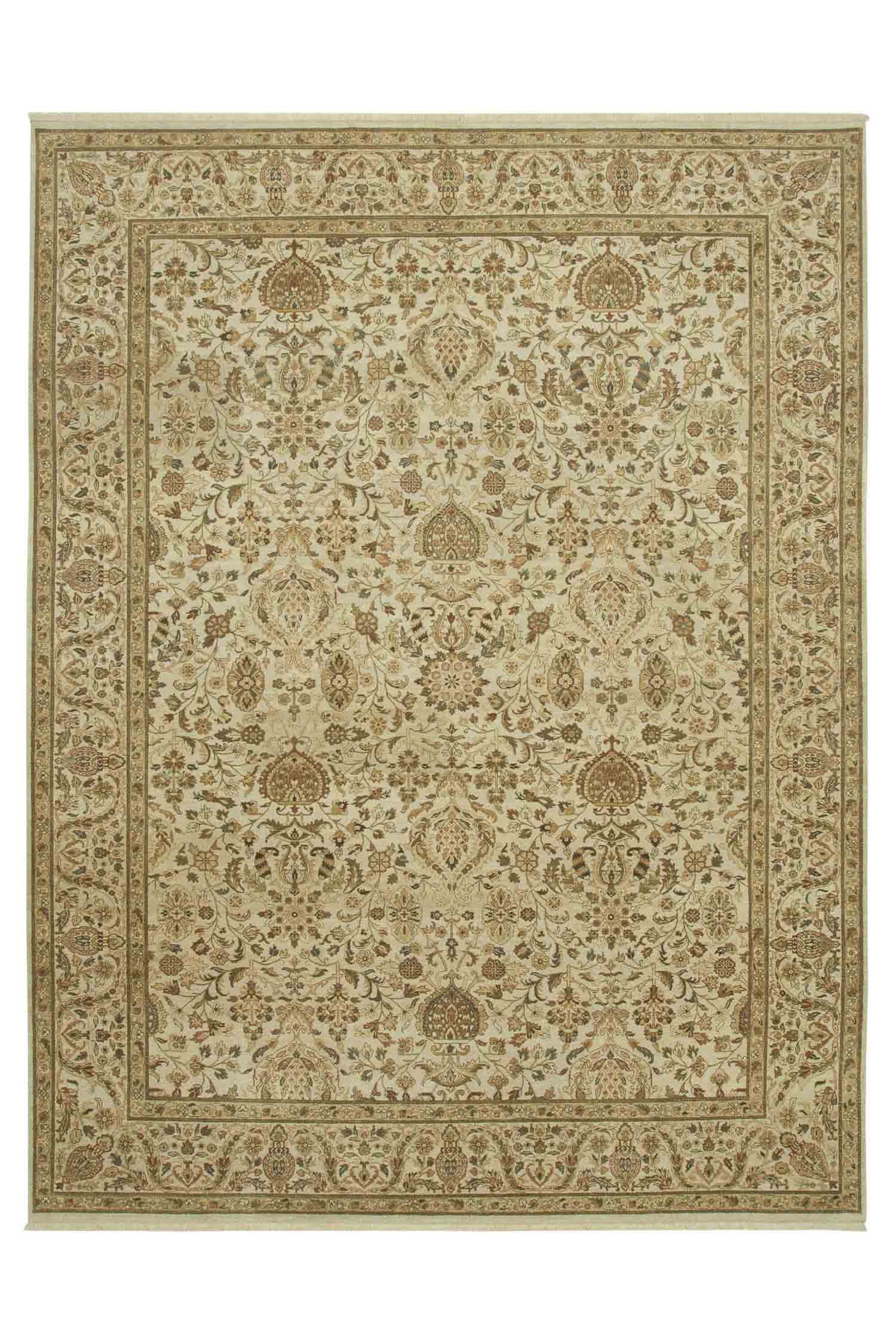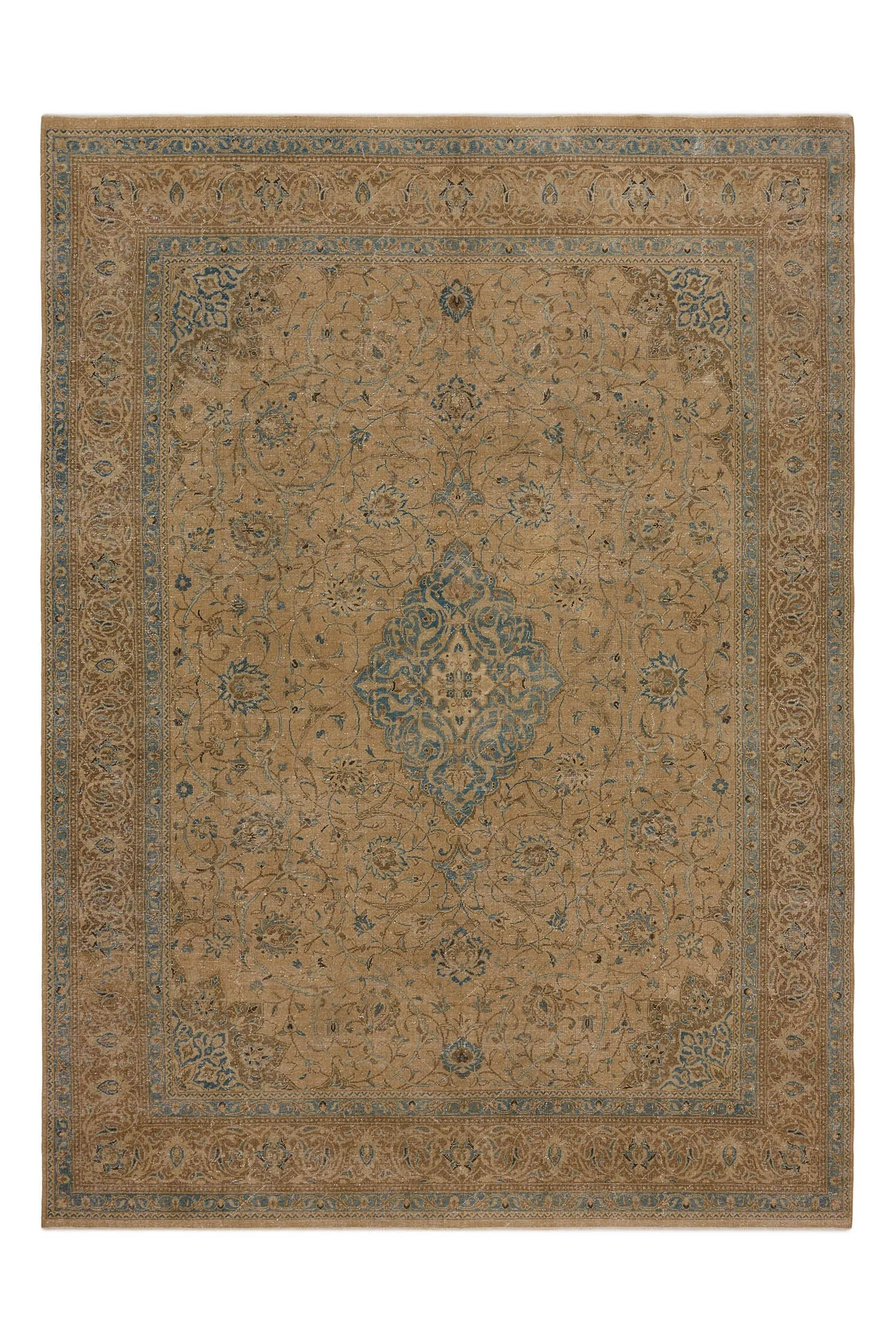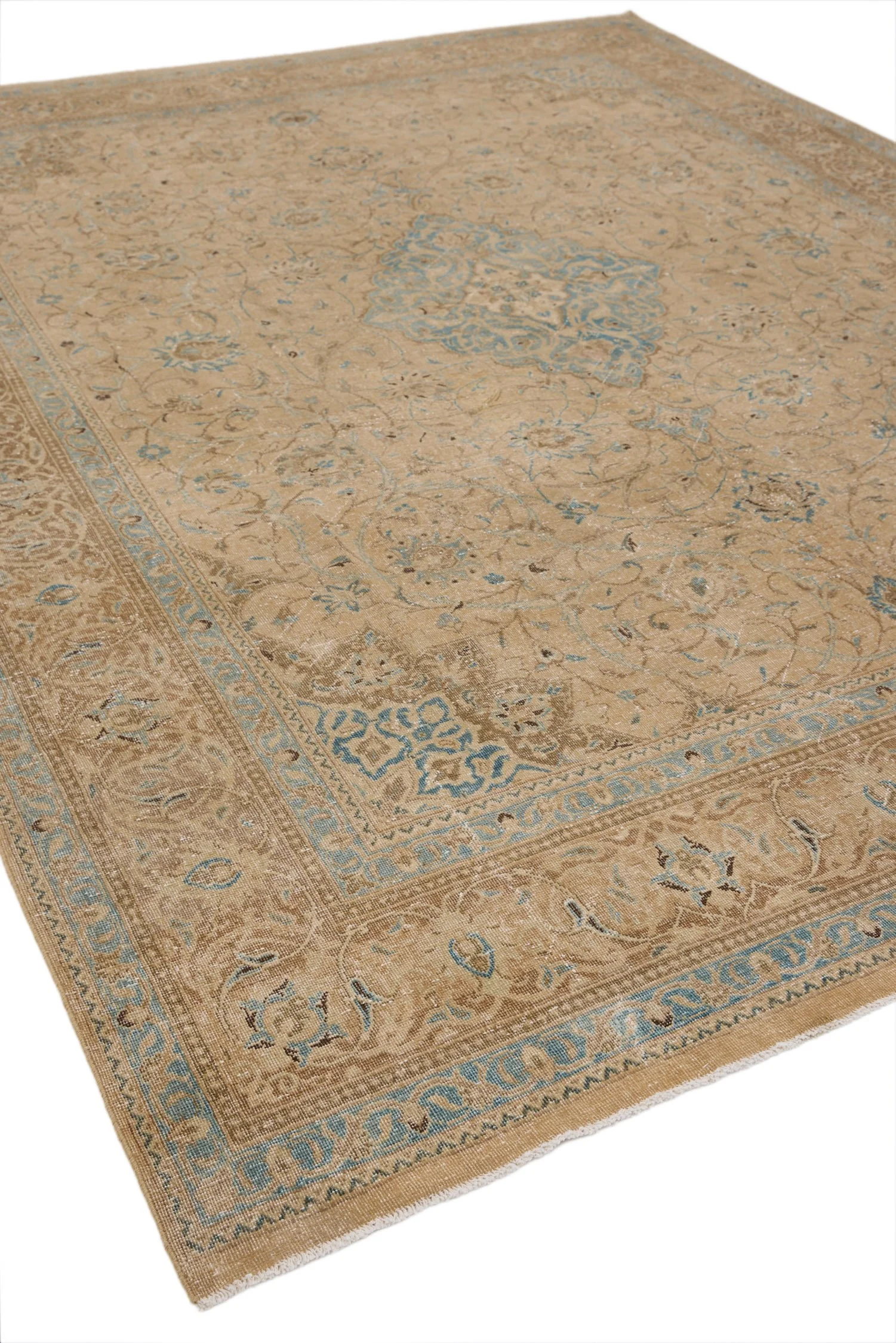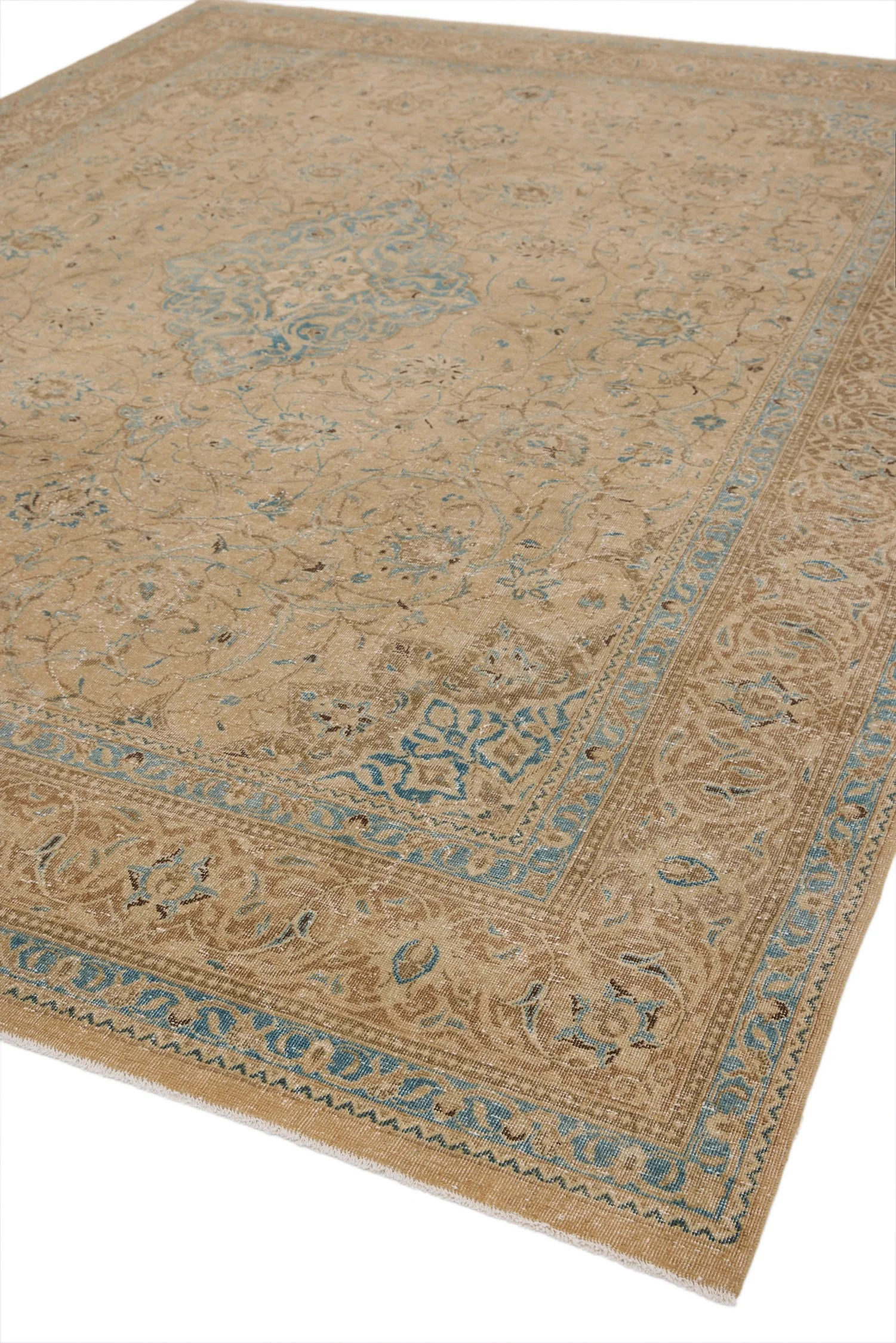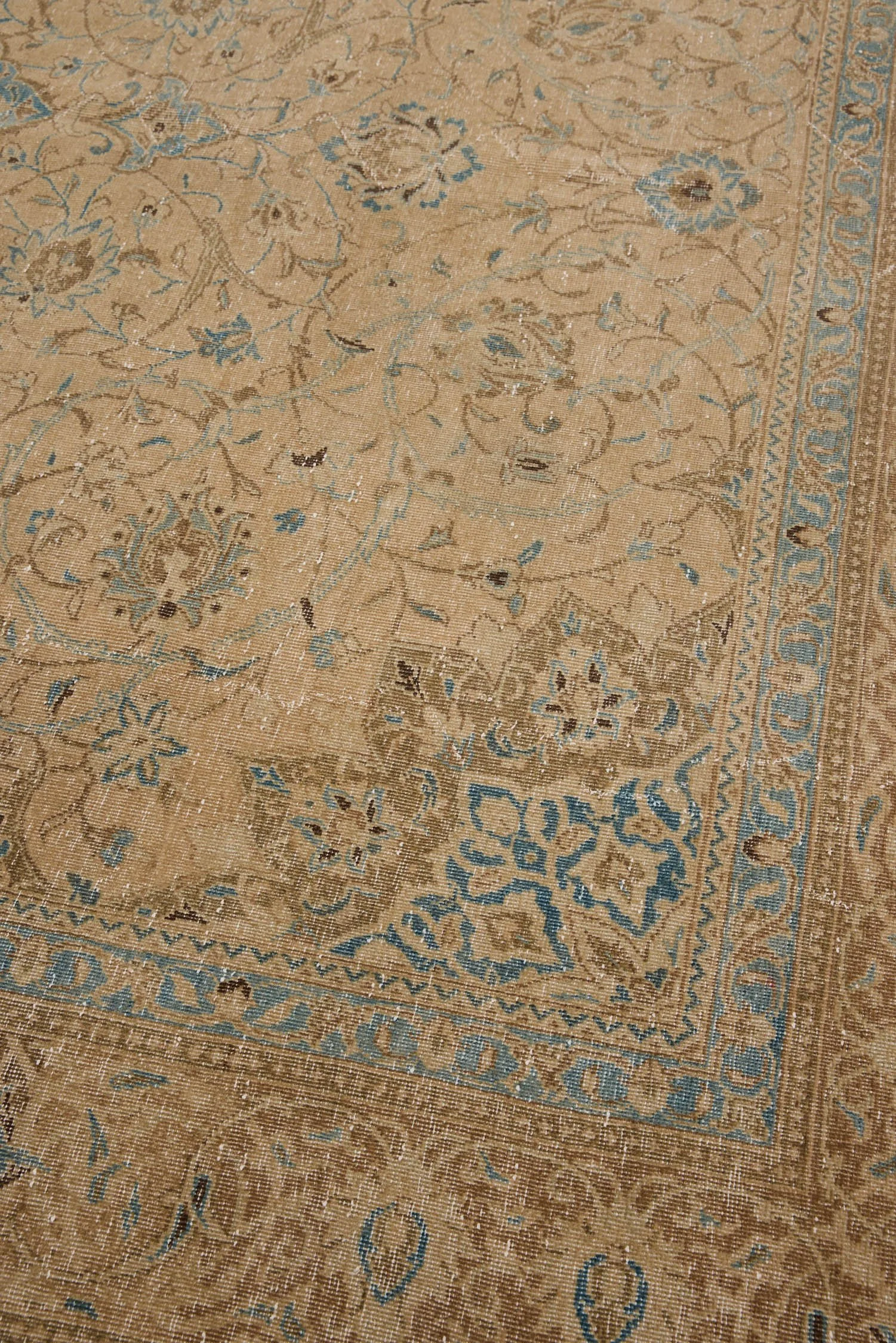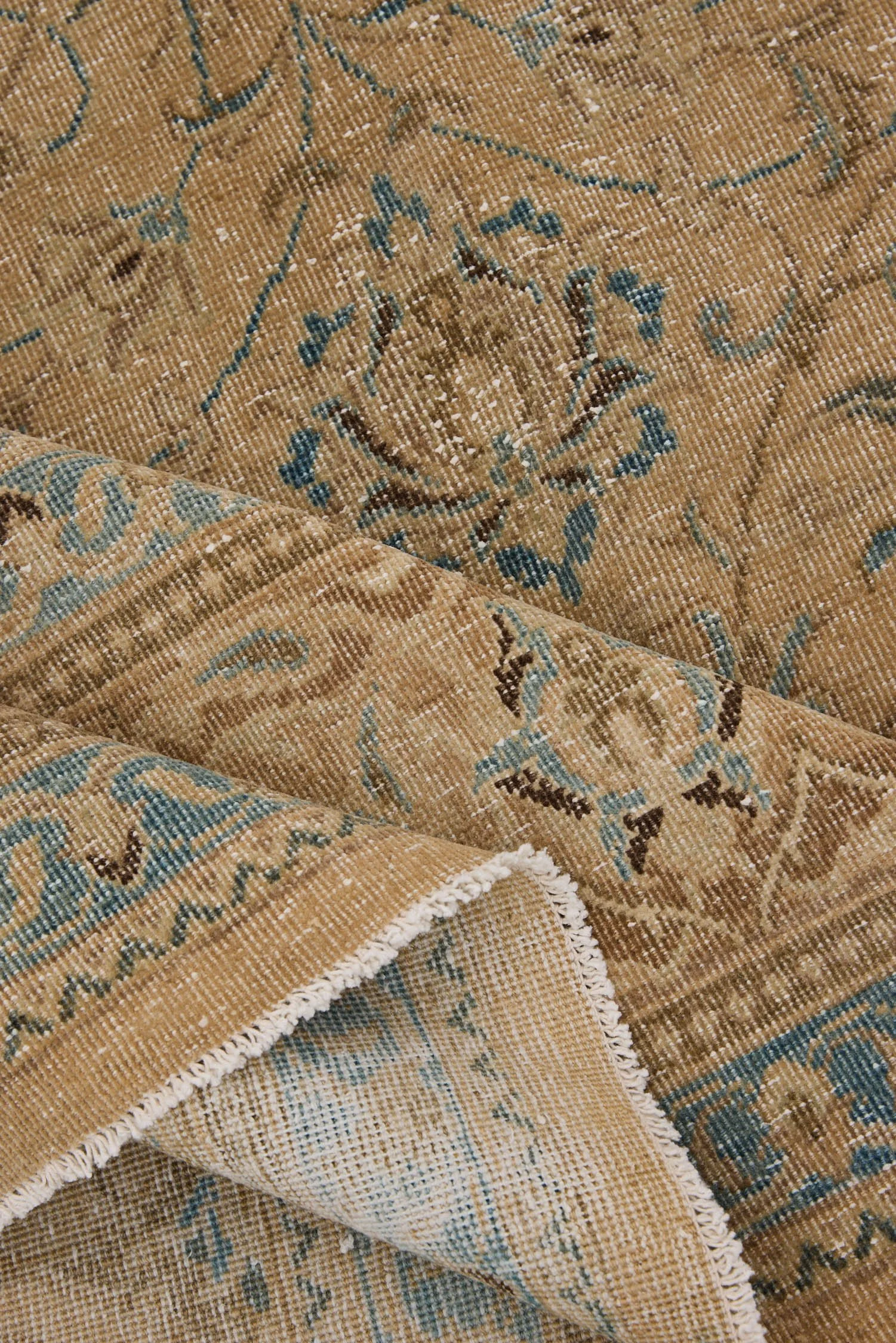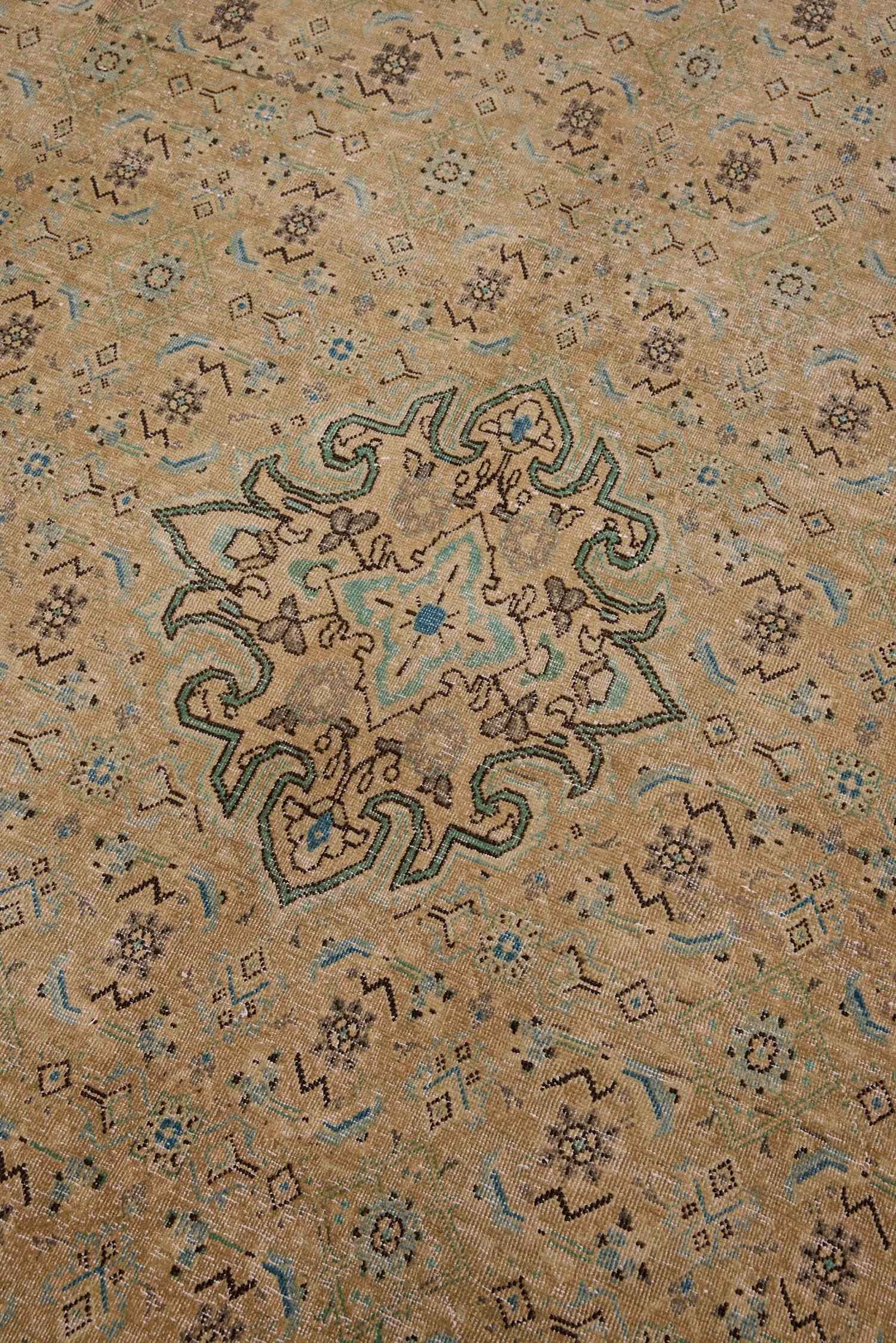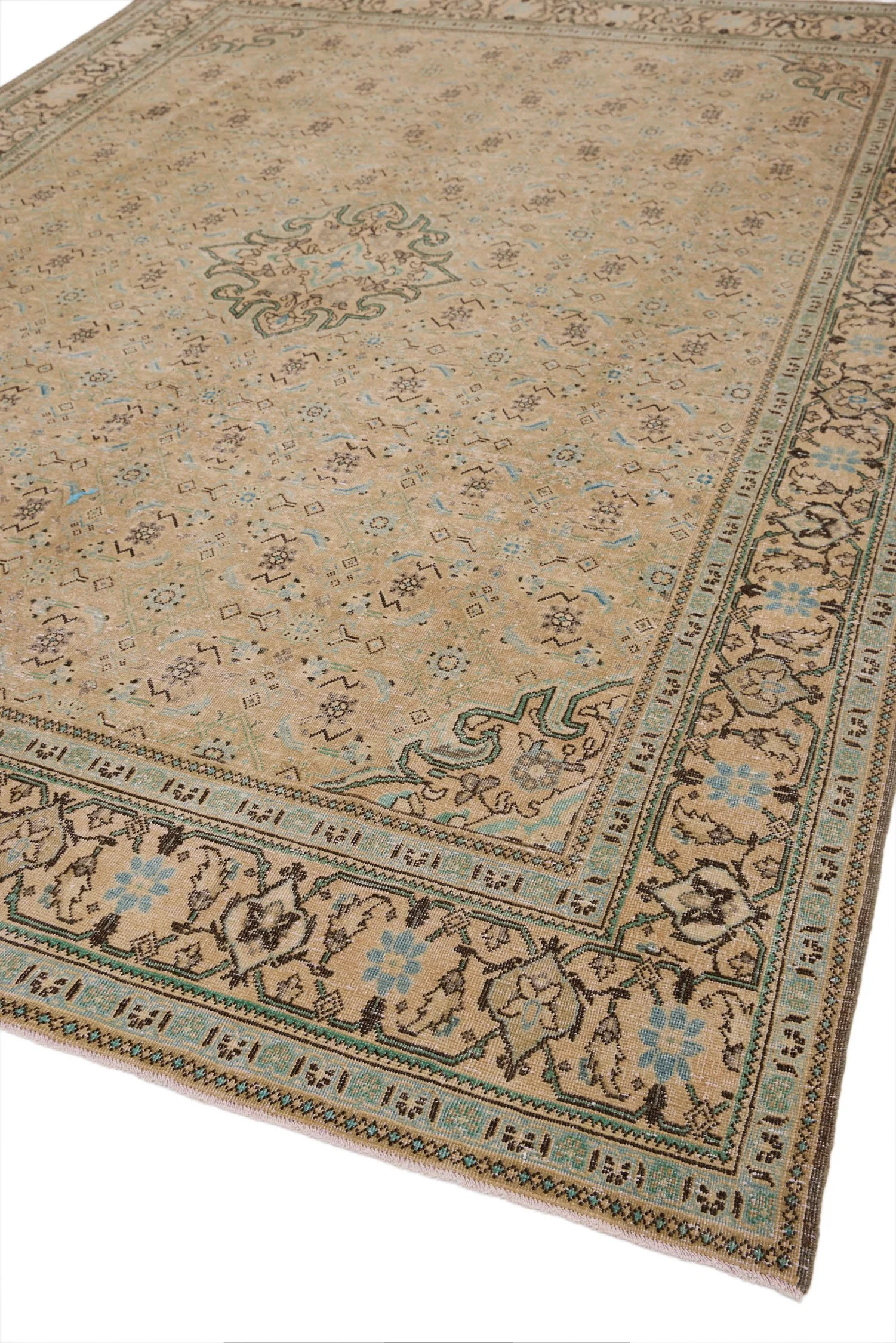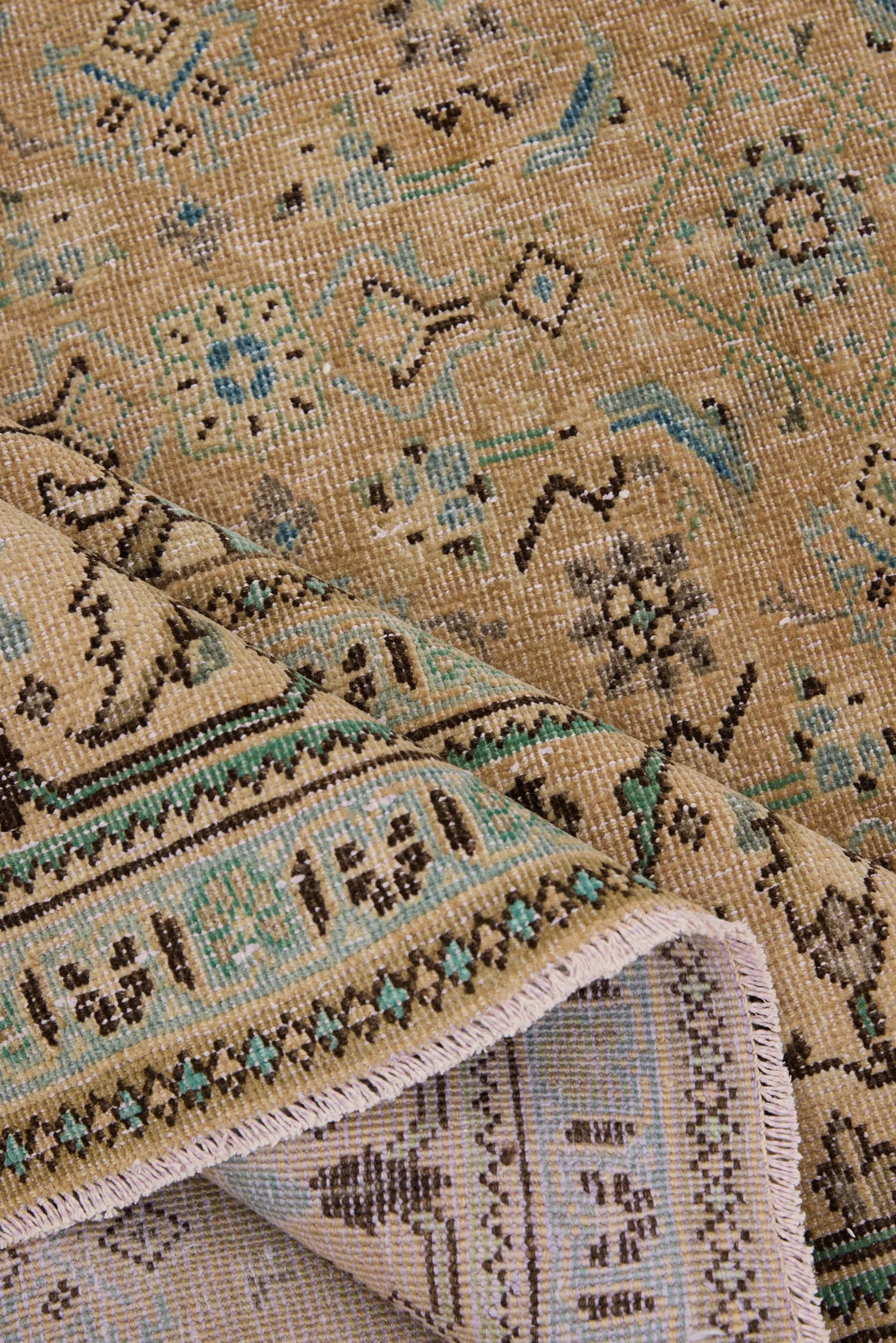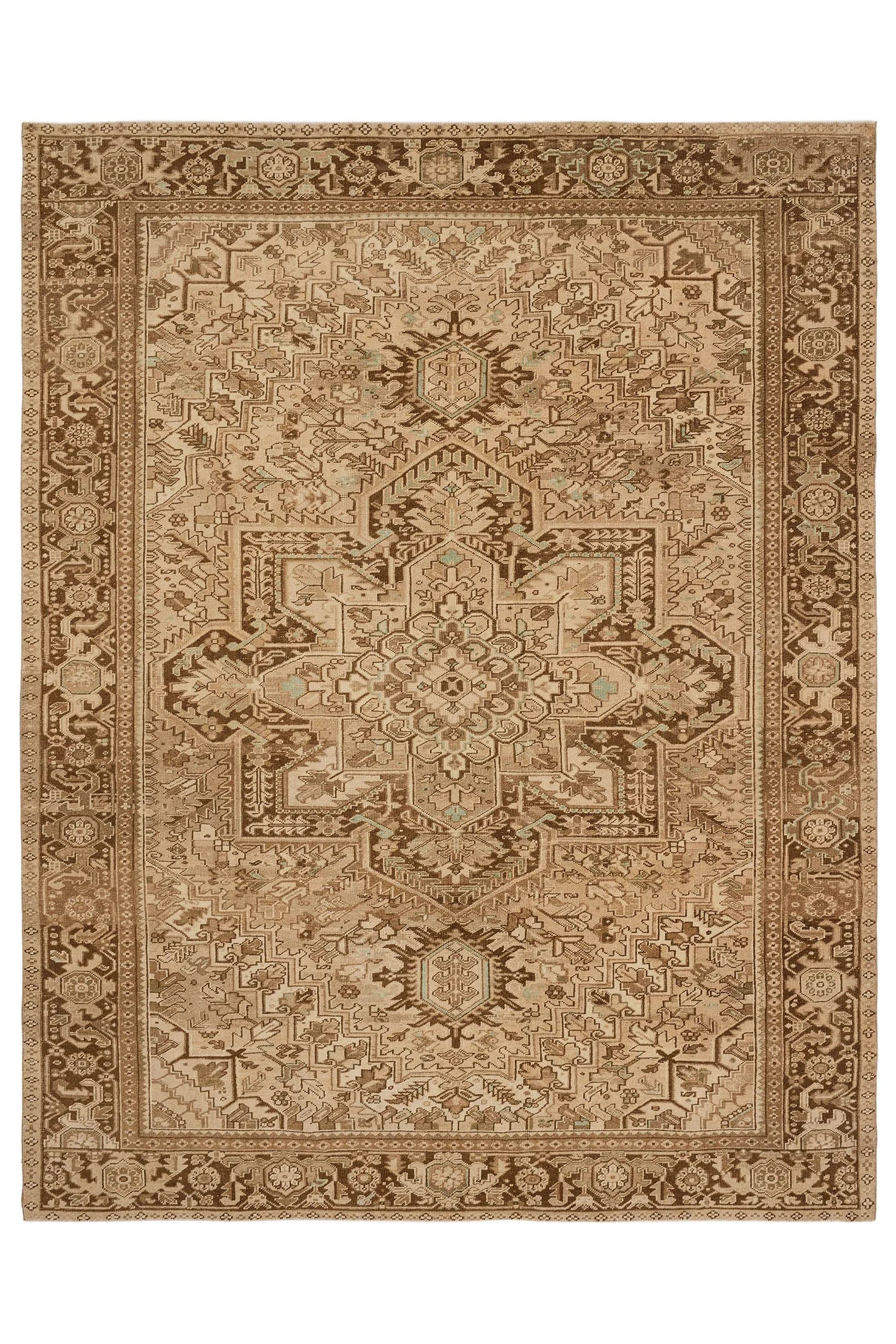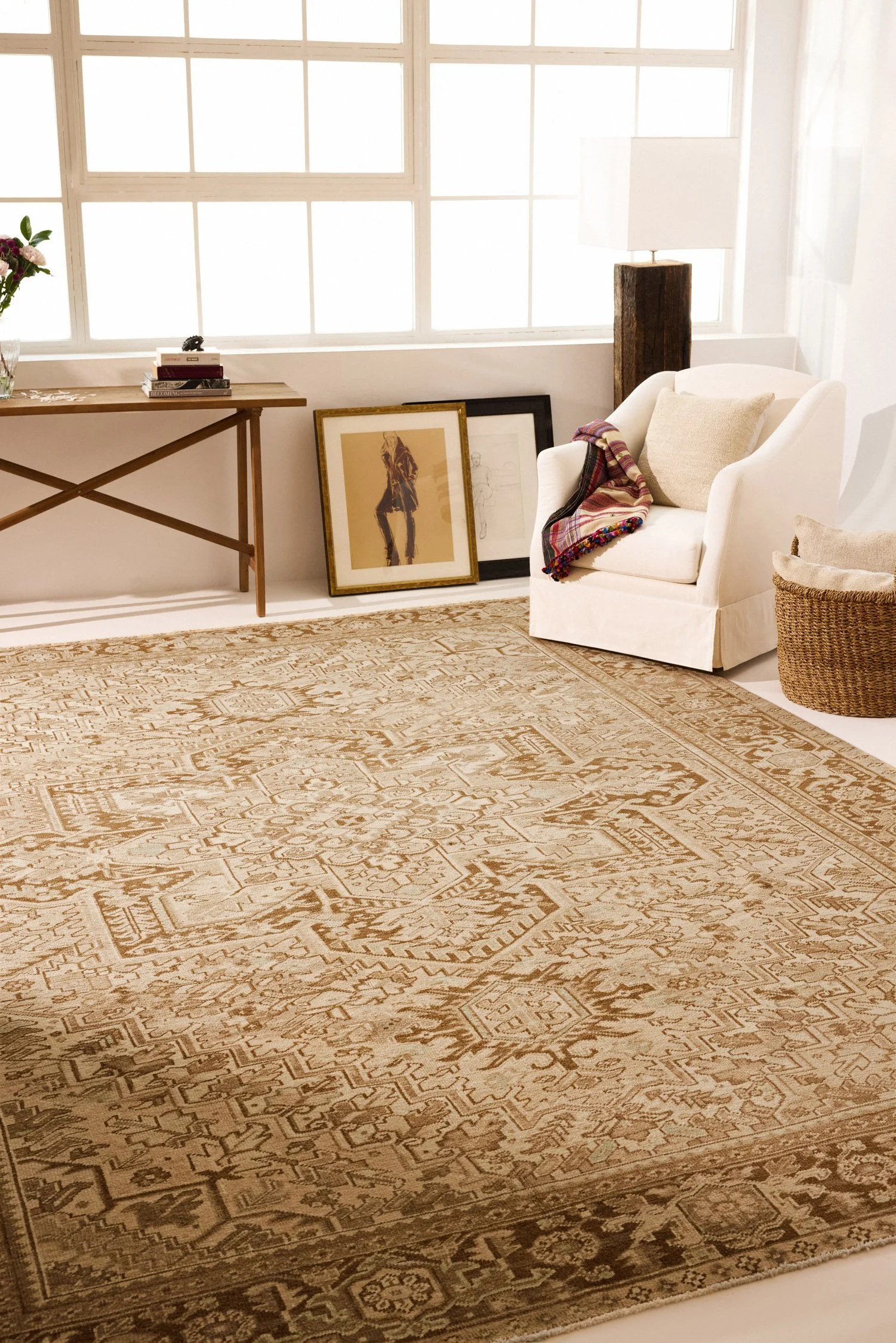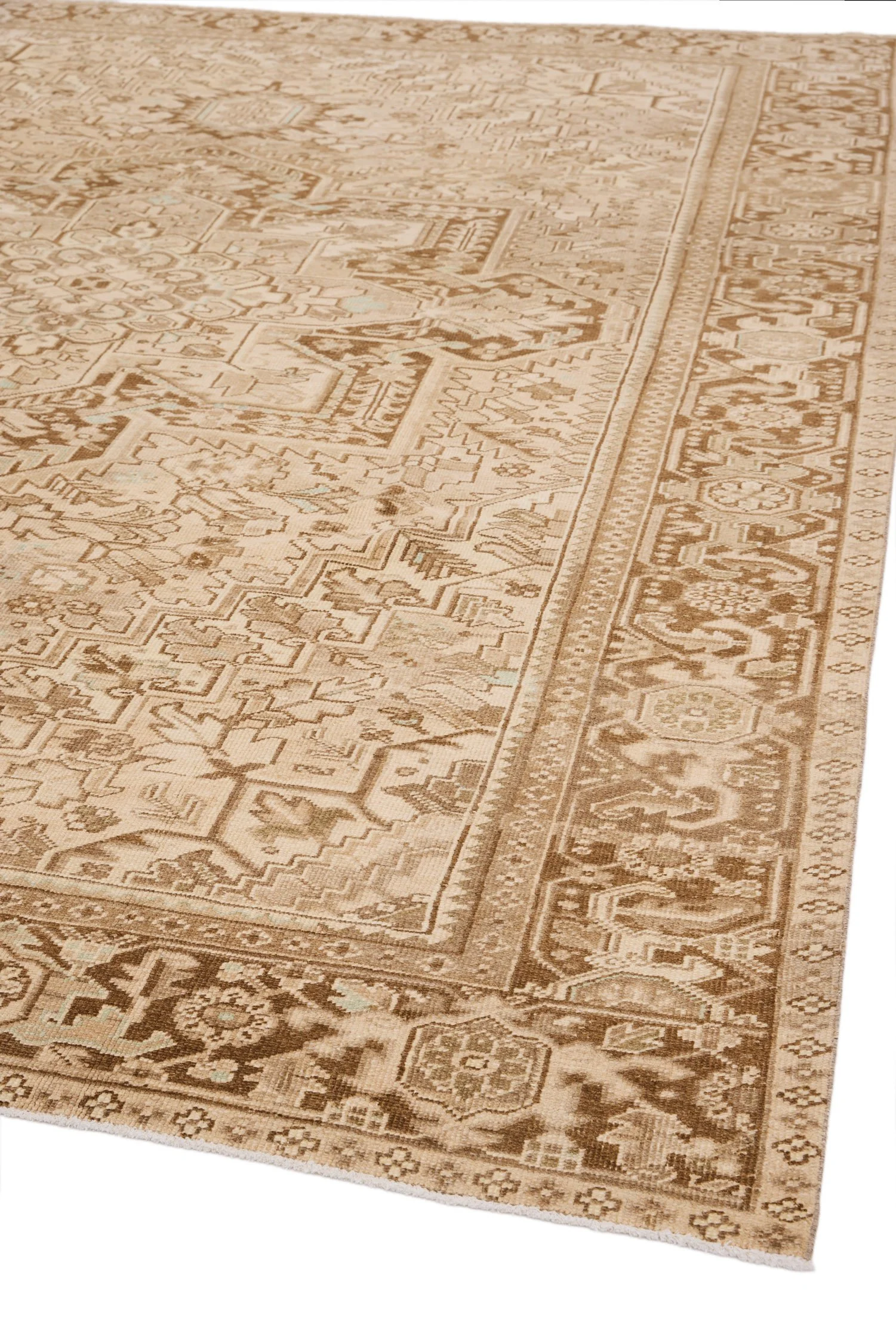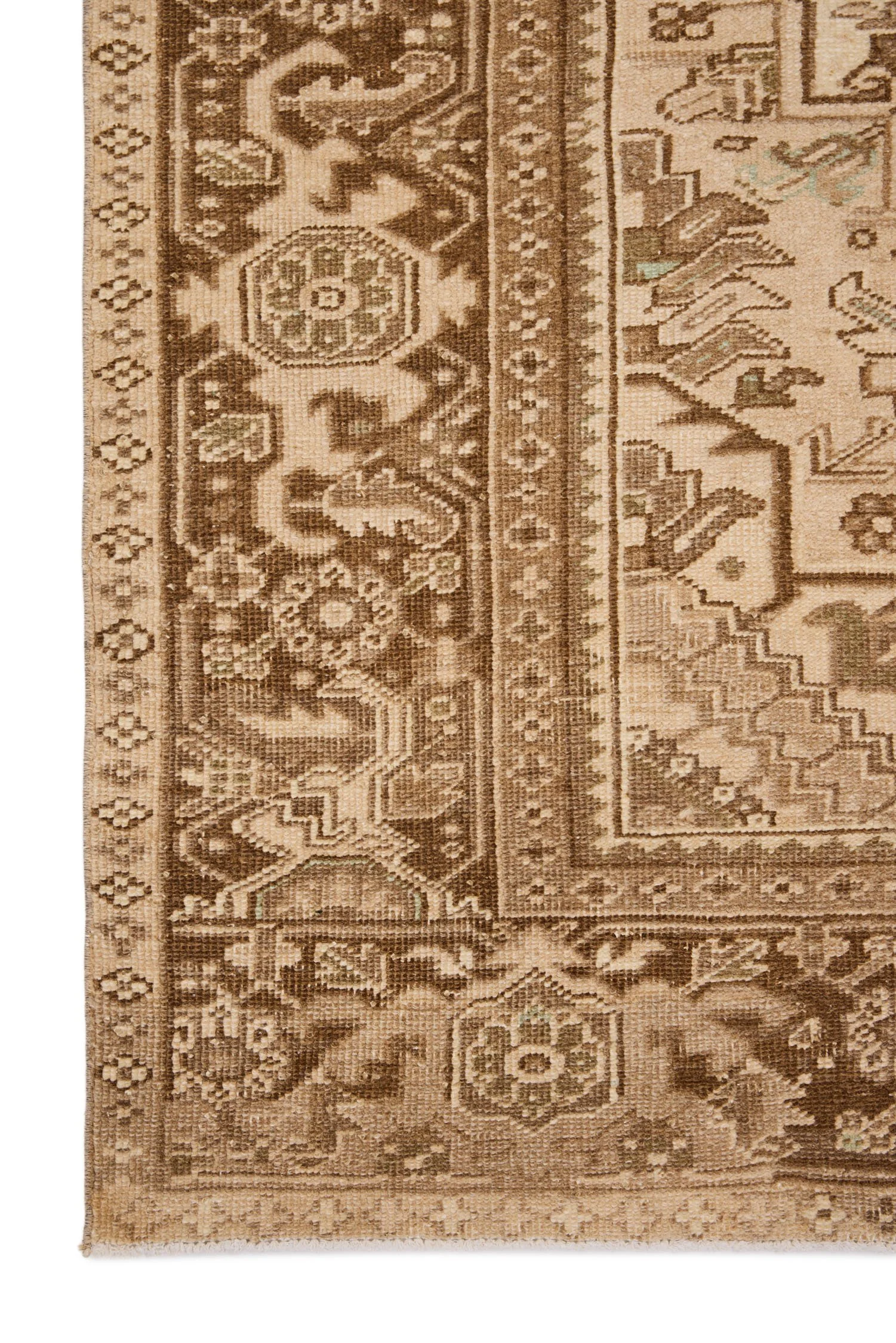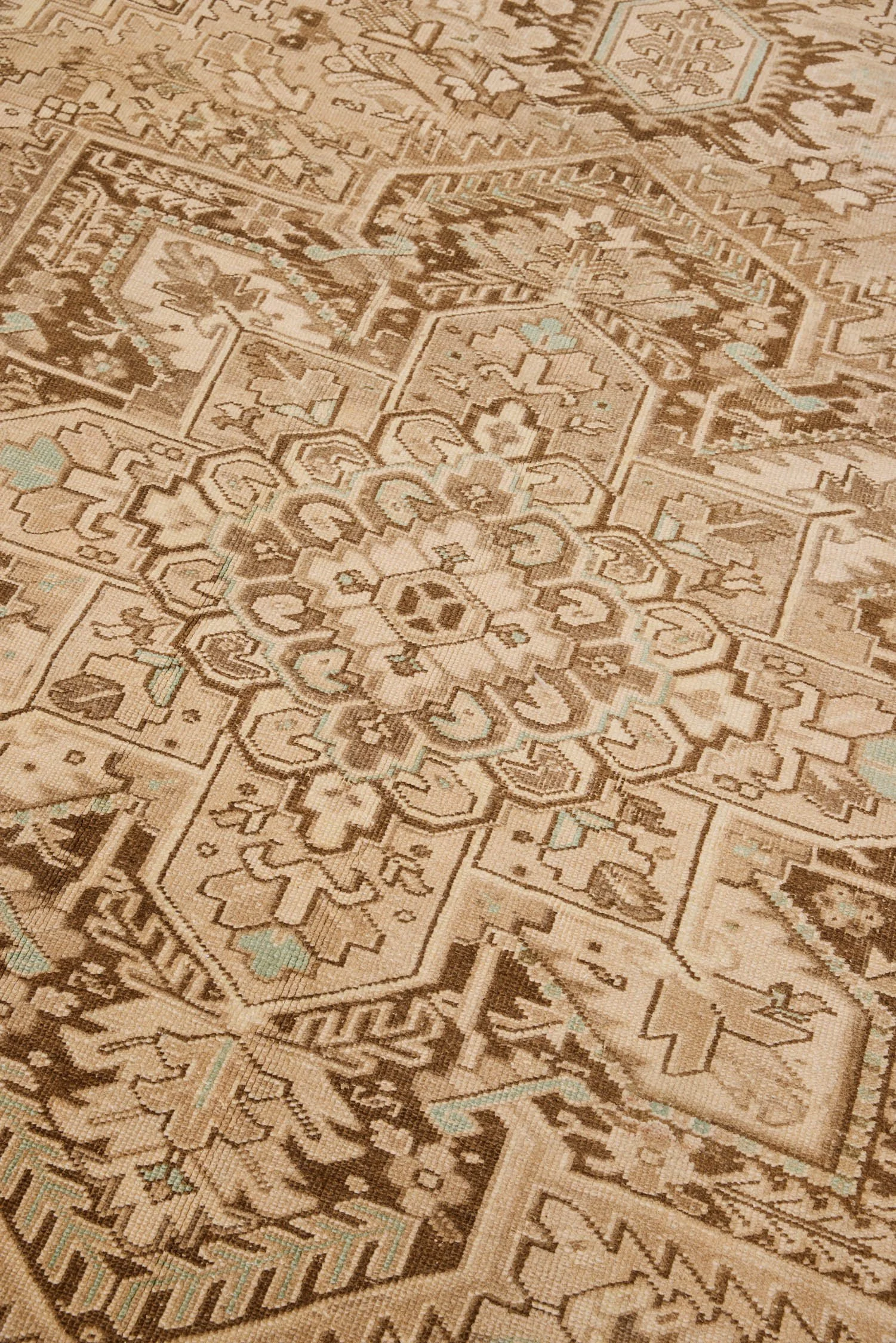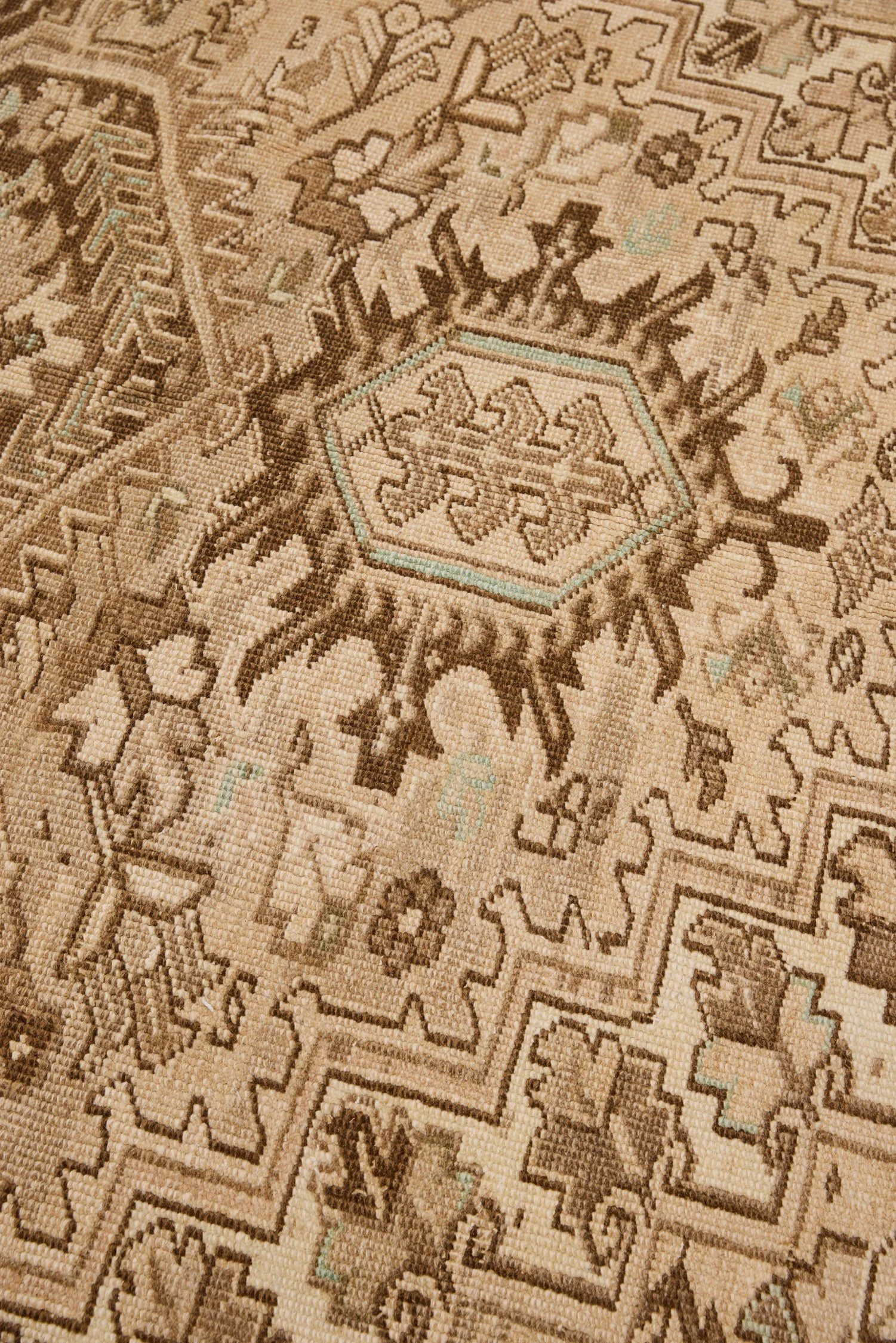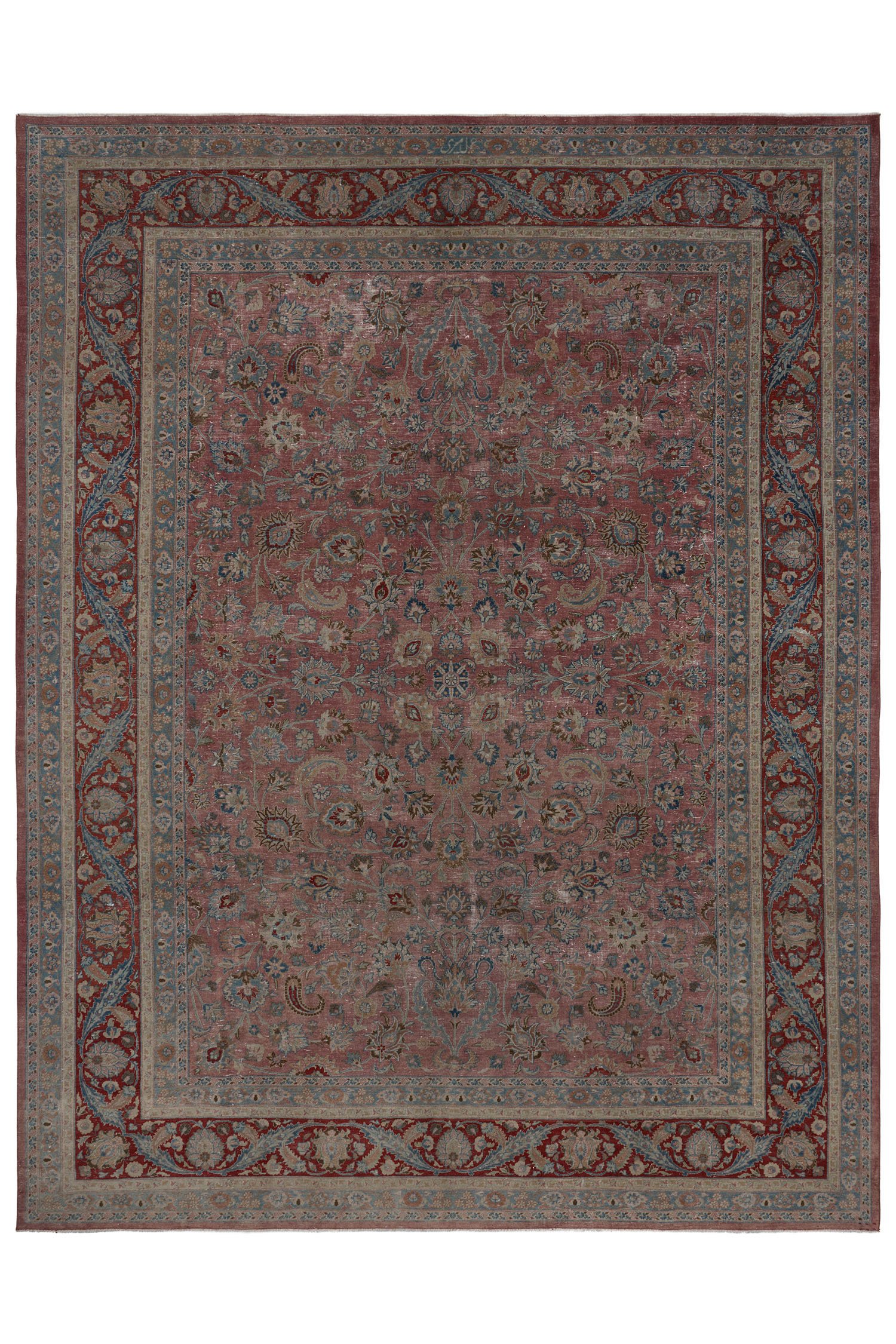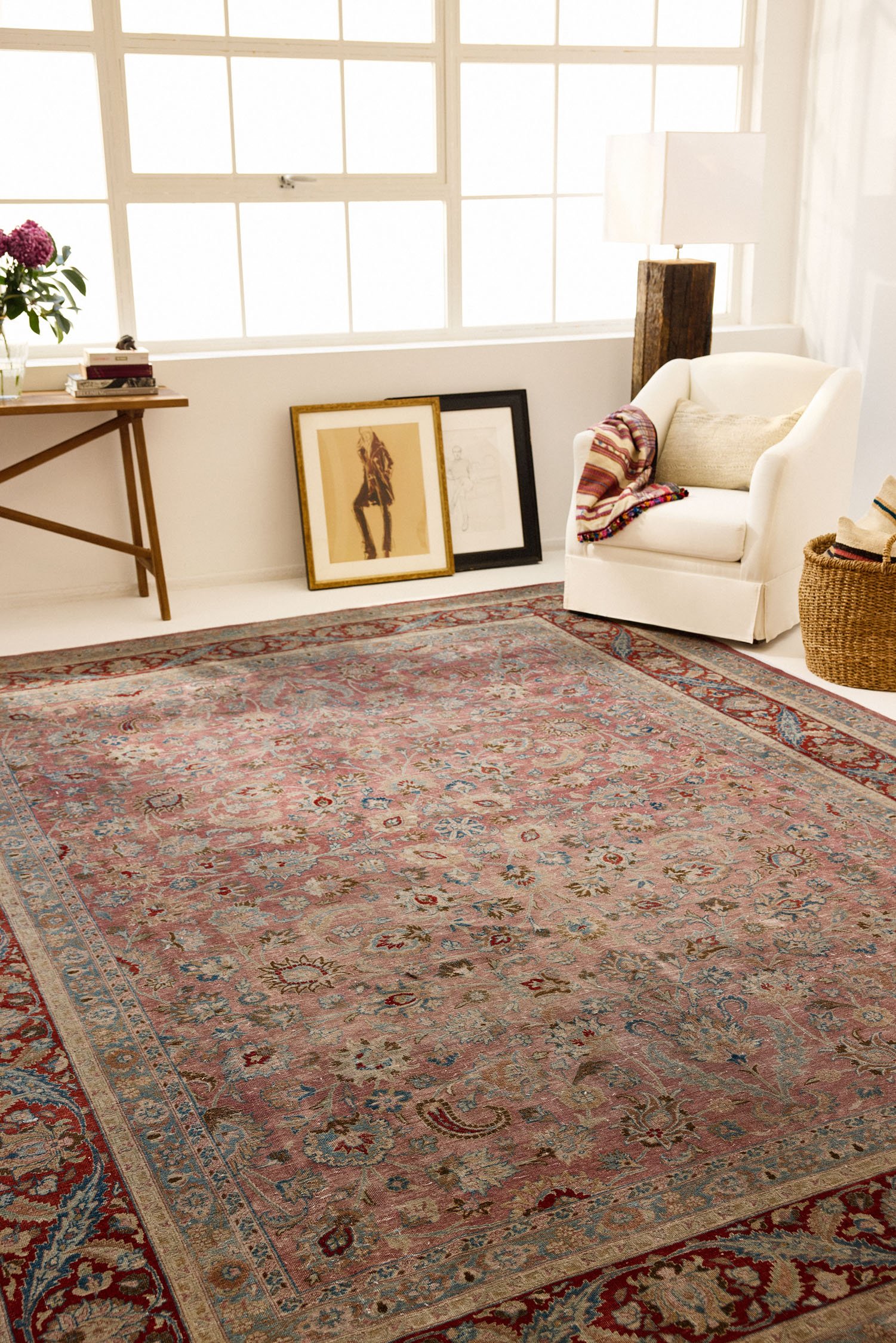Heritage and Craftsmanship
Tabriz workshops during the mid-20th century produced rugs that balanced technical accomplishment with aesthetic refinement. The fine knotwork these urban centers were known for allowed weavers to execute intricate patterns where individual motifs maintained clarity even within complex overall compositions. These pieces represented collaborative effort, with master weavers working from detailed cartoons drawn by pattern designers, dyers preparing colors according to established formulas, and skilled hands translating design into textile through thousands of individual knots.
Design Elements
The lattice of rosettes and vine scrolls creates an allover pattern that offers multiple entry points for the eye. Where the design once stood in crisp definition, natural wear has blurred boundaries between motifs and ground, creating a layered visual depth that pristine examples cannot achieve. Faded teal accents punctuate the composition, their muted quality preventing them from disrupting the overall harmony while providing moments of color interest. The abrash shifts visible across the surface reveal how different dye batches interacted during the rug's creation, these variations now enhanced by decades of use that have added their own gradations.
Placement
At 9'6" x 12'8", this rug anchors expansive living spaces, formal dining rooms, or generous primary bedrooms. The distressed quality and neutral palette of beige, brown, and faded teal work within interiors that embrace patina and character over pristine perfection. Its substantial size makes it effective as a foundational element in rooms where the rug supports rather than dominates, providing texture and warmth without demanding attention. The worn surface brings authenticity to spaces mixing vintage and contemporary elements.
Care Recommendations
To preserve the rug's beauty:
Rotate periodically for even wear
Vacuum regularly using a suction-only setting
Address spills immediately by blotting, never rubbing
Professional cleaning recommended annually
Avoid direct sunlight to maintain color integrity
Distressed Tabriz rugs appeal to those who find beauty in imperfection, who recognize that wear patterns tell stories about how objects have been used and valued over time. The softened outlines and faded colors create visual gentleness that works particularly well in contemporary interiors where hard edges and saturated tones might feel too insistent. These pieces offer a way to introduce pattern and history into spaces without the formality that pristine antique rugs can carry, their worn surfaces inviting use rather than careful preservation.




